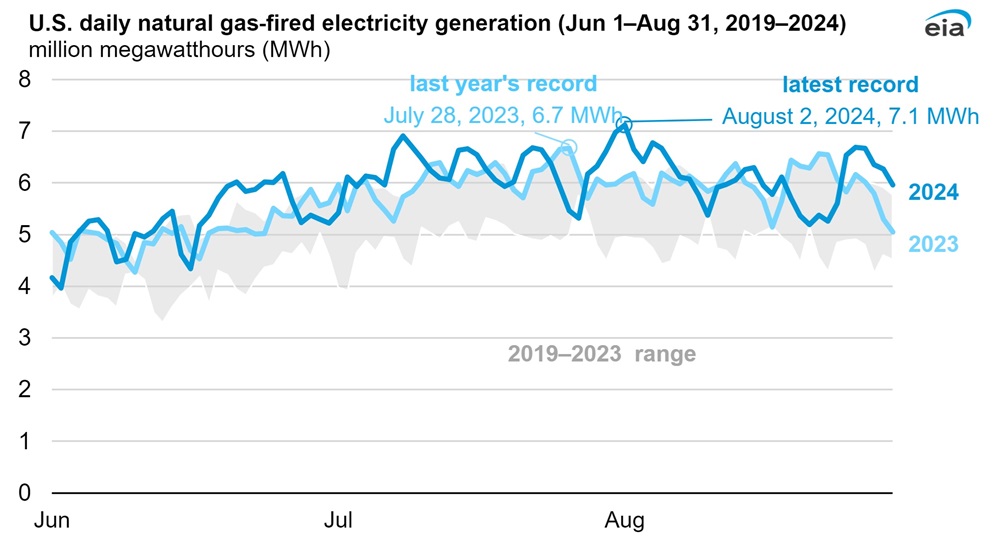
(Source: Shutterstock.com)
Gas-fired power plant usage continued trending upwards during the hot months of the summer, at times accounting for half of U.S. electricity generation, according to an analysis released by the U.S. Energy Information Administration on Oct. 8.
Nine of the 10 highest days in U.S. gas-fired power generation history occurred from June to August, according to the EIA. On Aug. 2, gas-fired power added 7.1 million megawatt-hours (MWh) to the U.S. power grid, a record.
Overall U.S. electricity generation rose 3% from 2023, with gas-fired power rising 3% overall as well. Several factors encouraged power companies to rely on natural gas. Prices for natural gas remained low, utilities continue to move away from coal usage, summer temperatures remained high and many utilities have grown their gas-fired capacities.

Also, as renewable electricity usage continues to grow, utilities see gas-fired generation as the most reliable and quickest source of back-up power for wind and solar energy, said analysts for Energy Intelligence.
During a seminar on Oct. 8, the company’s analysts noted the correlation between wind energy levels and gas-fired power. On July 9, gas-fired power added 6.9 million MWh to the U.S. energy grid. On the same day, wind energy added 300,000 MWh, about a million fewer megawatt-hours than the daily average.
Analysts expect the demand for natural gas to continue increasing for the long term, sparked by the explosive growth of data centers and an overall increasing demand for electricity. In June, Rystad Energy predicted that the U.S. would need to increase electrical output by about 300 terawatt-hours by 2030, a 7.5% increase, or enough to power Turkey.
Recommended Reading
Obsidian to Sell Cardium Assets to InPlay Oil for US$225MM
2025-02-19 - Calgary, Alberta-based Obsidian Energy is divesting operated assets in the Cardium to InPlay Oil for CA$320 million in cash, equity and asset interests. The company will retain its non-operated holdings in the Pembina Cardium Unit #11.
Bowman Consulting Acquires Texas Firm UP Engineering
2025-02-19 - The acquisition of UP Engineering strengthens Bowman Consulting Group’s position in the oil and gas market, Chairman and CEO Gary Bowman says.
TotalEnergies, Air Liquide Form Hydrogen Joint Venture
2025-02-18 - TotalEnergies says it will work with Air Liquide on two projects in Europe, producing about 45,000 tons per year of green hydrogen.
Diamondback Acquires Permian’s Double Eagle IV for $4.1B
2025-02-18 - Diamondback Energy has agreed to acquire EnCap Investments-backed Double Eagle IV for approximately 6.9 million shares of Diamondback and $3 billion in cash.
China's CNOOC Sells US Assets to Britain's INEOS
2024-12-15 - The Chinese oil and gas major said CNOOC Energy Holdings U.S.A. entered into a sales agreement with a subsidiary of INEOS relating to CNOOC's upstream oil and gas assets in the U.S. part of the Gulf of Mexico.
Comments
Add new comment
This conversation is moderated according to Hart Energy community rules. Please read the rules before joining the discussion. If you’re experiencing any technical problems, please contact our customer care team.




